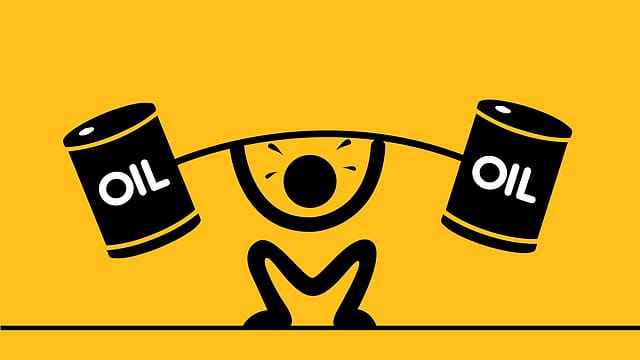Oil at $90: Why it's an alarm bell for Indian economy?
ADVERTISEMENT

Increasing crude oil prices threaten to play spoilsport in the central government's plan to ramp up investments in infrastructure with new budgetary allocations. The Brent crude price is now at around $90 a barrel while the Indian basket costs around $87. Saudi Arabia, the world's largest oil exporter, is looking to increase the official selling prices of all its crude grades sold in Asia next month, thanks to rising demand and refining margins.
High crude prices are a huge negative for India, which imports around 86% of its annual crude oil requirement.
The price rise will have direct impact on India's foreign exchange outflow, fiscal deficit and inflation. The country, which is Asia's third largest economy, is estimated to record 9.2% growth in GDP in 2021-22, following a contraction of 7.3% in the previous financial year. In order to revive the economy, the government is currently executing ₹111 lakh crore worth projects under the National Infrastructure Pipeline (NIP).
In April last year, India, the third largest crude oil importer and consumer, made a plan to scale up its import from the US and Africa after Saudi Arabia's decision to raise official selling price (OSP) of oil shipments to Asia. Prior to that the government had cut the expensive crude imports from Saudi while it was fighting the economic impacts of Covid-19.
January 2026
Netflix, which has been in India for a decade, has successfully struck a balance between high-class premium content and pricing that attracts a range of customers. Find out how the U.S. streaming giant evolved in India, plus an exclusive interview with CEO Ted Sarandos. Also read about the Best Investments for 2026, and how rising growth and easing inflation will come in handy for finance minister Nirmala Sitharaman as she prepares Budget 2026.
Reducing central taxes to control the prices of petrol, diesel and LPG is never an option for the government as it has been struggling to bridge the widening fiscal deficit and rising inflation. The government is looking to cut the federal fiscal deficit to 6.3%-6.4% in 2022-23 from 6.8% in 2021-22.
Following the rise in global crude prices, petrol and diesel rates in Mumbai had hit a record ₹113 a litre and ₹104 a litre, respectively, in October 2021. A couple of weeks later, the government had reduced the excise duty by ₹5 on petrol and ₹10 on diesel to offset the impact of crude prices, taking an estimated hit of ₹45,000 crore, or 0.2% of GDP, in the last five months of FY22. Most of the states and union territories had also slashed the value-added tax (VAT) on petrol and diesel.
The high fuel prices will increase the cost of essential goods and hurt the consumer spending. So it will have a huge impact on the government's income from excise duty. The reduction in taxes on fuel will help address inflation concerns to some extent as petrol has a 2.2% weightage in the consumer price inflation (CPI) basket and diesel has 0.15%. At the macro level, the price rise also affects external borrowings and the country’s debt position.
The crude price should ideally be in the range of $45-60 a barrel, says Arun Kumar Singh, chairman and managing director, BPCL, in October. Mukesh Kumar Surana, CMD, HPCL, quoted the ideal crude price range at $60-70. Both opine that the spike in prices will kill the oil market and spur demand for energy from alternative sources.
Another trouble is the weakening rupee against dollar. Rupee fell to 75.17 from 73.80 in the last two weeks. It will also increase the cost of country's crude purchase.
